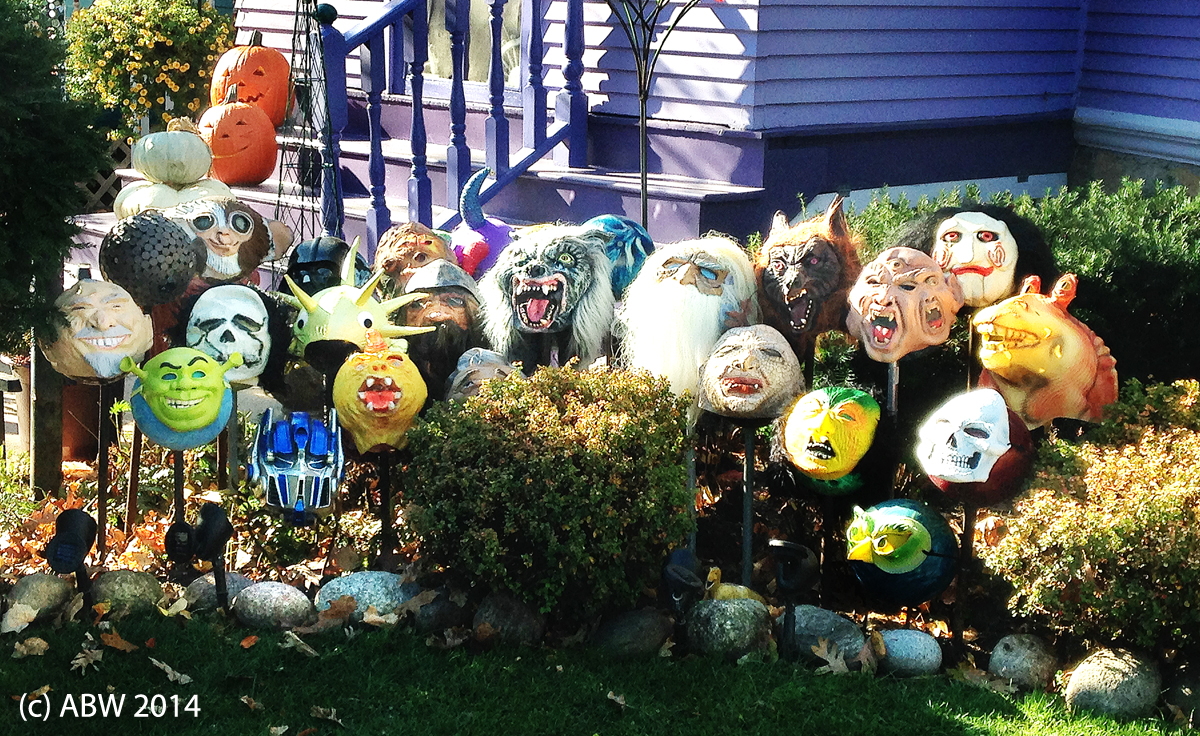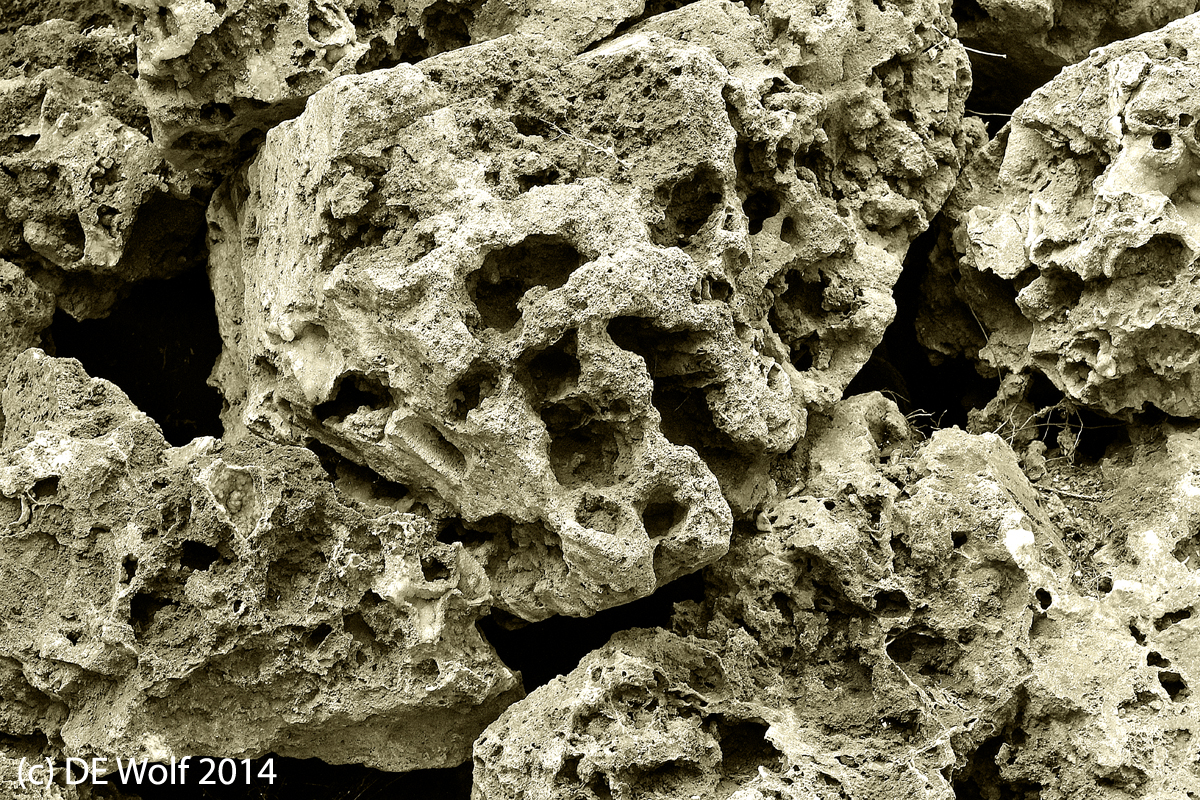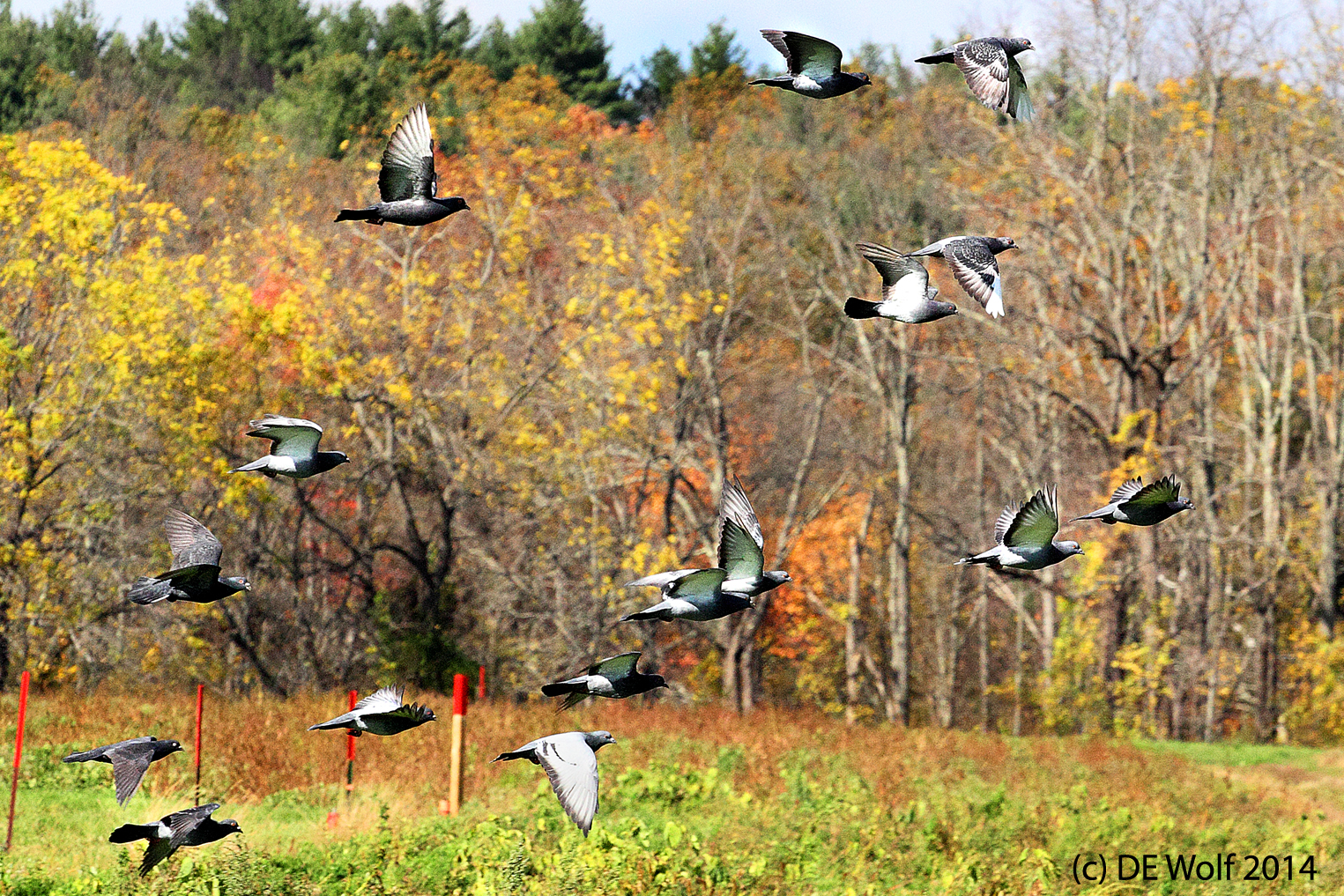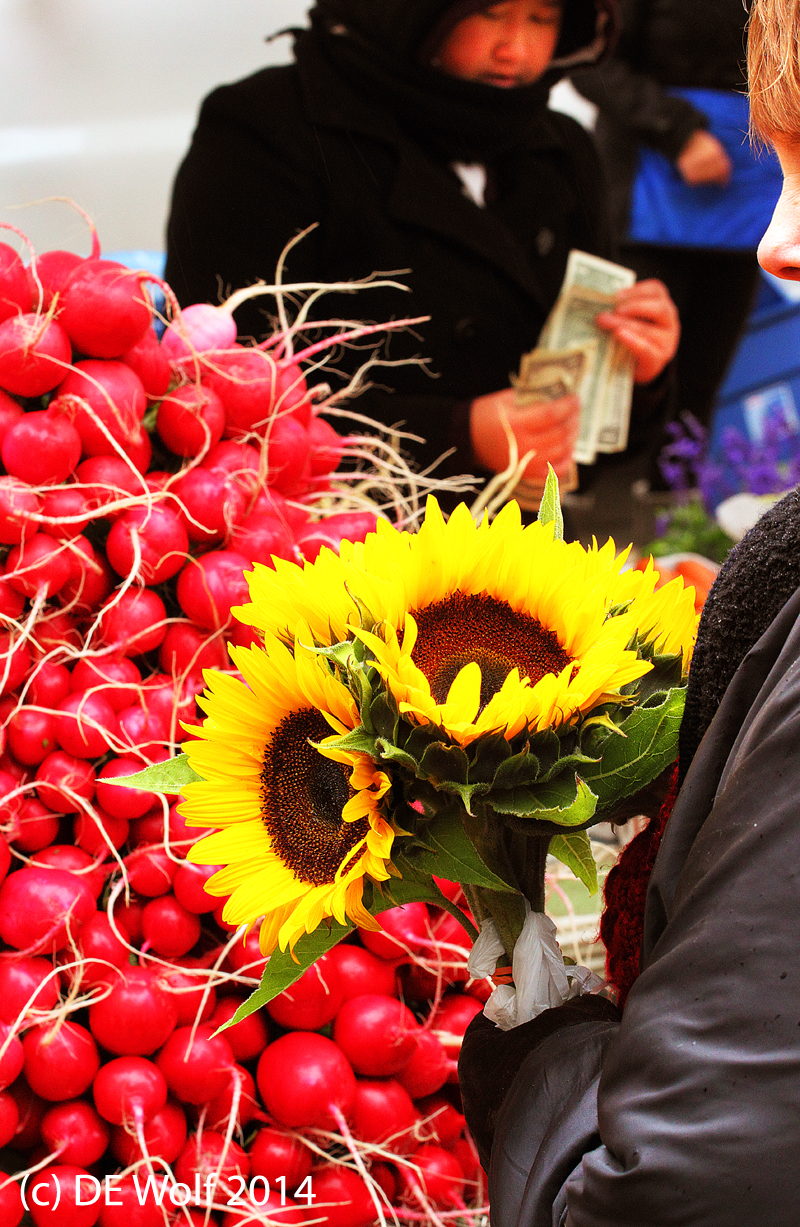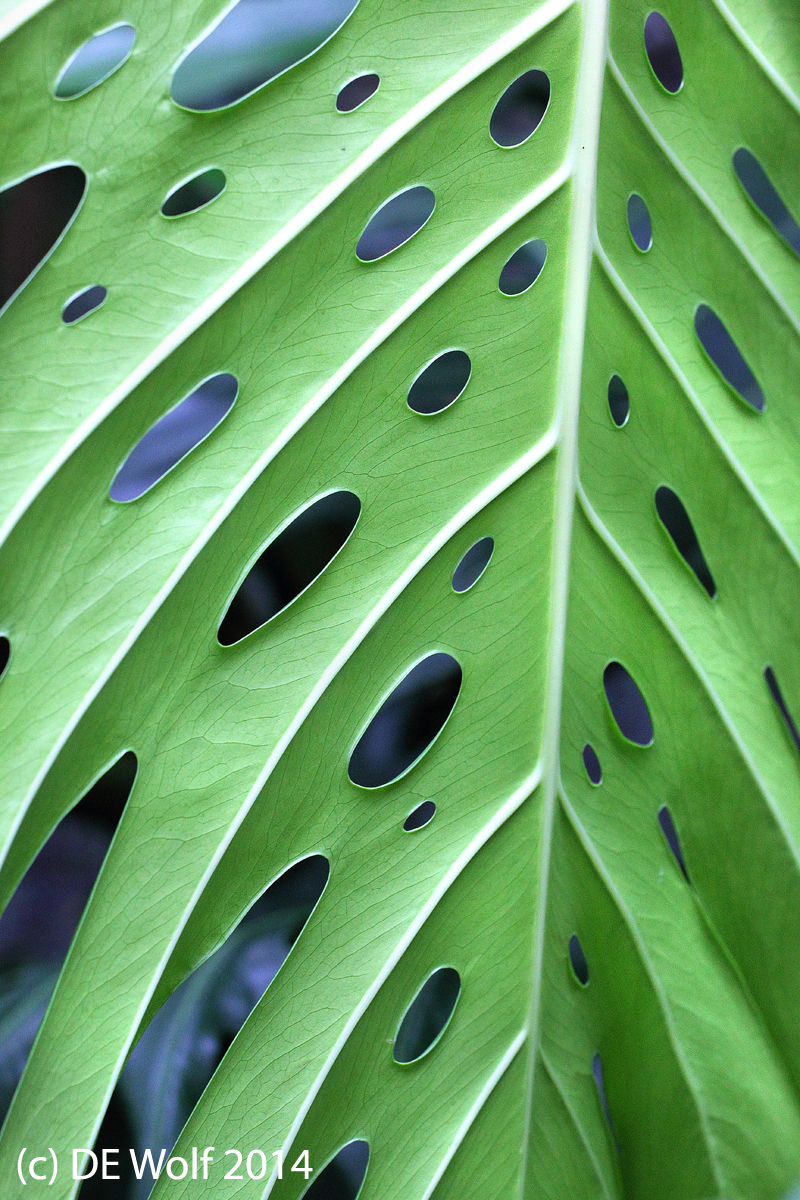
Figure 1 – Leaf in the Olbrich Botanical Gardens, Madison, WI. (c) DE Wolf 2014.
In photography two things often surprise me. The first, is that many times, when I open the RAW format of an image that I have destined to be black and white, how the color can already be almost monotone. This is probably the unassuming quality of RAW format. It assumes very little about what you are trying to do. The second, is diametrically opposed to the first. It is the moment when I start to convert the image to grey scale and suddenly it is as if someone has put on the brakes. The image demands, or at least is highly enhanced by, color.
Such is the case of the leaf image of Figure 1. I took it inside the green house of the Olbrich Botanical Gardens in Madison, WI earlier this month. I had conceived a black and white photograph focusing on texture and form. But the greens of the leaf itself and the contrasting blue tones of the bokeh behind it were just too appealing to be dismissed out of hand. And the other point about this image is that it was taken in a very flat overcast light. The greenhouse was actually quite dark and demanded a high ISO. But the illumination is beautifully even and still manages to accentuate the veins in the leaf. I have learned to low this kind of light and do not fear an overcast day.
I begin to question Kermit the Frog’s song “It’s not easy being green.” Green is so easy on the eyes and speaks volumes about the essense of life. It is so easy to be seduced by green; so perhaps the better song to sing is “Greensleaves.”
As i revisit the lyrics I am captured by the phrase: “Your vows you’ve broken, like my heart, Oh, why did you so enrapture me? Now I remain in a world apart,But my heart remains in captivity.” Green houses are in a sense meant to deny death or to deny, at least the season. Here we have a green and vibrant tropical leaf, stolen in a sense from its real world, held captive in a place that isolates it from a cold Midwestern winter, a place where it is always spring.
Canon T2i with EF70-200mm f/4L USM at 98 mm, ISO 1600, Aperture-priority AE mode 1/160th sec at f/6.3 no exposure compensation.

